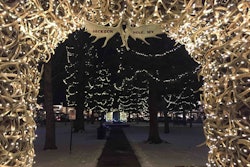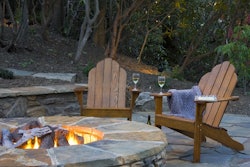 Yew contains alkaloids that causes cardiac arrest and is toxic to people, dogs, livestock and wildlife.
Yew contains alkaloids that causes cardiac arrest and is toxic to people, dogs, livestock and wildlife.Photo: Sage Ross/Flickr
Back in May, Idaho officials began their negotiated-rulemaking process for banning certain species of yew plants as noxious weeds and now it has decided to abstain from creating a rule for the Legislature to review.
The push to ban the landscaping plant is due to it being the culprit behind the death of at least 28 elk, 50 pronghorns and an unknown number of deer statewide this past winter as the harsh conditions caused the big game to seek out vegetation in more urban areas.
The Idaho State Department of Agriculture (ISDA) cited a concern about the cost of enforcing the new rule and the lack of consensus among the group. It held four meetings during the rule making process where environmentalists, county weed superintendents and members of the landscaping industry clashed.
Angela Rossman, a member of Great Old Broads for Wilderness, and the catalyst for the negotiated rulemaking in the first place, wasn’t surprised by the decision.
“We’re just leaving our options open now,” she told the Idaho Statesman. “We’re not sure whether we’ll take the Legislature route or the Judiciary route… In rendering their decision, the department appears to have completely avoided the clear language and intent of the Legislature.”
Part of ISDA’s reluctance to propose a rule banning the yew as a noxious weed is due to Idaho’s definition of noxious weeds. These are described as “any plant having the potential to cause injury to public health, crops, livestock, land or other property; and which is designated as noxious by the director (of ISDA).”
While it was agreed that the yew plants do pose a threat, it was decided the plant did not fit the other characteristics of a noxious weed. The noxious weed statute is also the only program ISDA could use to regulate the yew species.
“The yew species associated with the current rulemaking do not share any of the characteristics in common with all the other noxious weeds on the list,” ISDA’s analysis said, according to the Idaho Statesman. “To the contrary, they are not known to be invasive or cause environmental harm or damage as a result of their growth habits or ability to spread in the Idaho environment. It is not in any dispute by any of the rulemaking stakeholders or this agency that they are toxic to mammals and can and have cause the death of wildlife, pets and livestock. This alone cannot justify adding the species to the noxious weed list.”
The recent coverage of the wildlife deaths and rulemaking process has helped with consumer awareness of the plant’s toxicity and the landscaping industry is pushing for education over a total ban.
“We have learned a lot through this process and believe that it will be in the best interest of the industry to begin an awareness campaign for the use of yews and to educate people on using them in the right place in the landscape,” Ann Bates, executive director of the Idaho Nursery & Landscape Association, told the Idaho Statesman.
Certain nurseries have already started offering homeowners a credit for replacement shrubs and make a point to educate shoppers on the dangers of certain yew species, but they still offer the plant for sale.









